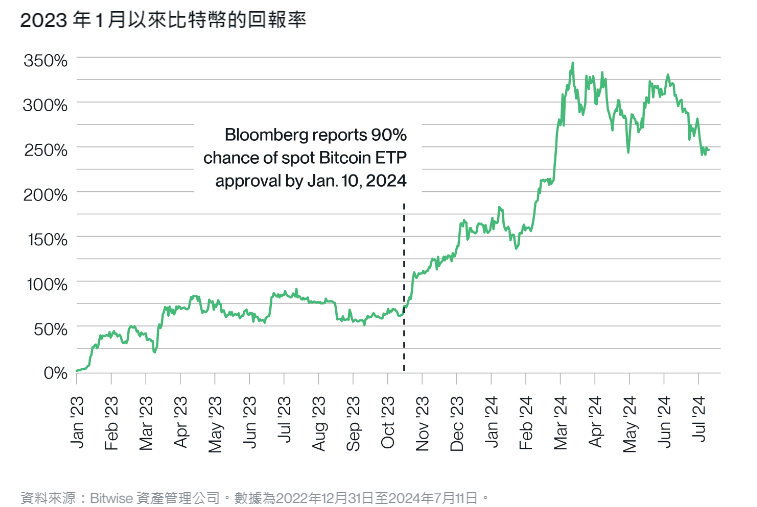Matt Hougan, founder of ETF issuer Bitwise, said that the launch of the Ethereum spot ETF will push the price of Ethereum to rise and break through historical highs, with a chance of exceeding $5,000 by the end of the year.
( Ethereum spot ETF fees are disclosed and are expected to be officially launched on 7/23 )
Table of contents
ToggleObserved from the supply and demand side
Hougan believes the best way to simulate the potential impact of the launch of an ETP (an exchange-traded product, of which ETFs are a fund category) on commodity prices is to consider supply and demand. ETPs do not change the fundamentals of underlying commodities such as ETH, but they do bring new sources of demand.
Consider the price changes of Bitcoin after the launch of the Bitcoin Spot ETF in January. Since that day, the Bitcoin ETF has purchased more than twice as many Bitcoins as miners were able to produce:
- BTC purchased by ETF: 263,965 BTC
- BTC produced by miners: 129,181 BTC
Since the launch of the Bitcoin Spot ETF on January 11, BTC has gained approximately 25% and has gained more than 110% since the market began pricing in October 2023.

Hougan previously speculated that the Ethereum spot ETF would attract $15 billion in capital inflows within 18 months of listing. Inflows into Ethereum ETPs will have a greater impact on Ethereum for three structural reasons.
( Bitwise: Ethereum spot ETF will attract $15 billion in capital inflows )
ETH lower short-term inflation rate
When the Bitcoin ETP was launched, the inflation rate on the Bitcoin network was 1.7%. In comparison, Ethereum’s inflation rate over the past year was exactly 0%. This is because, while a small amount of ETH is produced every day, ETH is also consumed based on the use of Ethereum, and over the past year, these two forces have reached a balance.
Unlike BTC miners, ETH stakers do not need to sell
Second key difference: Bitcoin miners typically have to sell the BTC they receive, while ETH stakers do not.
Ethereum does not rely on mining, but uses Proof of Stake (PoS). In the PoS system, users use ETH as collateral to ensure that they process transactions accurately and authentically. In return for correctly processing the transaction, stakers will be rewarded with new ETH. There are no significant direct costs to staking, so there is no need to be forced to sell to balance its operating costs.
28% of ETH is staked and thus exits the market
Staking has another effect: when you stake ETH, you are locking the ETH in the contract for a period of time. During this period, ETH cannot be withdrawn and sold. Currently, 28% of ETH is staked, meaning it is effectively taken off the market.
On top of this, another 13% of ETH is locked in decentralized finance smart contracts – for example, as collateral in the loan market. This makes more ETH disappear from the market.
Add them all together, and roughly 40% of ETH is unsaleable to some extent.
ETH will have a chance to challenge $5,000 by the end of the year
Based on the above inference, Bitwise expects that the new Ethereum spot ETF will drive the trend of ETH after its listing. The first few weeks may be rocky though, as there may be outflows after the $11 billion Grayscale Ethereum Trust (ETHE) converts to an ETF. But by the end of the year, new highs will occur and ETH will have a chance to surpass $5,000.







